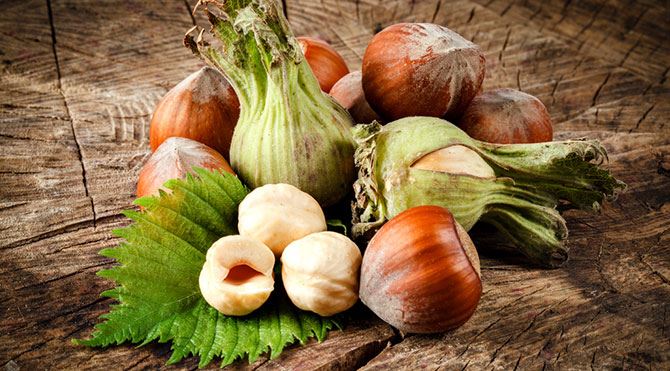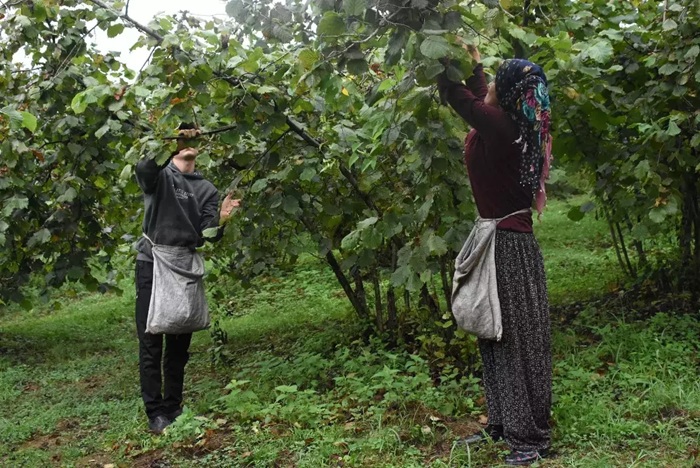
Fig. 1: Hazelnut area of northern Turkiye (Samsun to Trabzon = 285 km (Photo: Source)
Sam Topalidis (2025)
Pontic Historian and Ethnologist
Introduction
Hazelnut is a genus of about 15 species of deciduous shrubs and trees in the birch family and the edible nuts they produce (www.britannica.com/plant/hazelnut). Turkish hazelnut kernels range from 9–15 mm in length (https://eu-ekoterra.com/turkish-hazelnuts/). The northern part of Türkiye, adjacent to the Black Sea, produces most of the world’s hazelnuts and is the world’s largest exporter of these nuts (Fig. 1).
Hazelnut (Corylus avellana L.) kernels (Plate 1) are primarily utilised by the chocolate, confectionery, pastry and bakery industries (Özdemir et al. 2024). Hazelnuts are around 64% fat (predominantly monounsaturated), 16% carbohydrate and 14% protein (Islam 2018). Every part of the hazelnut can be used. Dried husks are sold as animal bedding. The shells can be burned for fuel or to make artificial wood laminate. The branches are used as garden stakes, or split and woven to make traditional conical harvest baskets (archive.aramcoworld.com/issue/201405/the.hazelnuts.of.trabzon.htm).
History of the Hazelnut in Anatolia
Archaeobotanical samples from Kanesh in the centre of Anatolia from the Middle Bronze Age (c.2000–1700 BC) preserve evidence of charred hazelnut shells. However, hazelnuts do not grow in the area, being a native of the northern Anatolian coast. This evidence supports claims, based on cuneiform tablets, that hazelnuts were traded at Kanesh (Fairbairn et al. 2014).
Since antiquity, walnut, hazelnut and chestnut trees have been grown along the coast of Pontos in north-east Anatolia. In Pontos, the first recorded export of hazelnuts was in 259 BC to Alexandria and they were still a major export during the Komnenoi Byzantine empire of Trebizond (1204–1461). Indeed, in 1405, Clavijo caught a Genoese hazelnut cargo ship travelling from Platana (near Trabzon) to Istanbul. In 1418, Alexios IV Komnenos paid a massive indemnity to Genoa in hazelnuts (Bryer (1975); Bryer and Winfield (1985)).

Plate 1: Hazelnut kernels, shells and green husks (Photo: Source)
The Konstantinidis Family
From 1885 to 1904, Georgos Konstantinidis served as the mayor of the Muslim majority town of Giresun (Fig. 1)—quite an achievement for an Orthodox Greek (Balcı and Yilmaz 2018). His family would become Europe's largest hazelnut exporter. In 1883, his brother Devonis founded a hazelnut importing company in Marseille, France. From 1889, Devonis introduced the first hazelnut harvesting machines, as well as new methods to break hazelnut shells. This change would lead to the mass production and commercialisation of hazelnuts (Rodríguez 2023:14–17).
World’s Largest Hazelnut Producer
[ Words in square brackets ‘[ ]’ within a reference are the author’s words. ]
The favourable climate has led to the predominant cultivation of hazelnuts along the Turkish Black Sea coast. The region is largely mountainous and hazelnut groves extend up to 600 m [and sometimes higher] in altitude. Hazelnuts reach maturity from early August to early September. Seven Turkish hazelnut cultivars, Giresun Tombul, Çakıldak, Foşa, Karafındık, Mincane, Palaz and Sivri, are commercially significant. Giresun Tombul stands out due to its high fat content, easy removal of the hazelnut kernel’s skin after roasting and distinct roasted flavour (Özdemir et al. 2024:1–3).
Türkiye on average produces 66% of the world’s hazelnut production and 70% of the world’s hazelnut exports (FAOStat 2020). In 2022, Türkiye still produced most of the world’s hazelnuts, with 765,000 tons [of hazelnut kernels?] (Schmauder et al. 2025). During the 2022–2023 hazelnut export season, Türkiye earned over [US] $1.7 billion by selling more than 283,000 tons of hazelnuts [kernels?] (www.hurriyetdailynews.com/hazelnut-harvest-season-starts-in-black-sea-region-185461). It is the primary source of livelihood for [allegedly] around 3 million Turkish people.
However, in recent years Türkiye’s market share of hazelnut exports has declined significantly. For example, at the beginning of the 2000s, 82% of the world’s hazelnut exports came from Türkiye but more recently, Italy, Chile, Azerbaijan and Georgia have increased their share of the world hazelnut market. Türkiye has been struggling with low yield, traditional production methods, small farm size and marketing problems (Aydoğan 2022).
There are 400,000 disorganised Turkish cultivators in the market. When it comes to added value in Türkiye, there is a lot to be desired. The Italian company Ferrero, which owns the Nutella brand presumably buys most of its hazelnuts from Türkiye (worldcrunch.com/business-finance/hazelnuts-turkey-nutella).
Growing Hazelnuts
In northern Türkiye, the hazelnut trees planted in commercial groves grow to approximately 3 m in height (www.sciencedirect.com/topics/food-science/hazelnut). Temperatures below -8°C and above 36°C adversely affect the growth of the hazelnut tree. More than 700 mm annual rainfall is required, especially in June and July, but supplementary irrigation is useful during the establishment stage. Hazelnuts do not tolerate windy conditions and low humidity and require a well-drained soil about 1 m deep. Deep loam soils are preferred with high organic matter and neutral to slightly acid soil (Islam 2018:261–262).
Hazelnut is a multi-stemmed bush (called ocak) in commercial groves. The ocak system is a multi-rooted planting system on a 1 m diameter circle specific to Türkiye. However, recently hazelnuts have been planted in rows. Hazelnuts require a minimal amount of pruning but controlling suckers can be time-consuming. Fertilising is recommended in November-February with nitrogen applied in the last week of March (with the formation of leaves) and in the last week of May (Islam 2018:262–263).
Harvesting Hazelnuts
Harvesting hazelnuts is usually by hand in the eastern Black Sea area, but they are generally harvested mechanically in the newer western and middle Black Sea areas. They can be harvested off the ground or from the branch (Plate 2) (Islam 2018:265).
Hazelnuts can be harvested for 50–60 years after they start to bear fruit. Picked hazelnuts are dehusked and brought to the threshing floor and dried in the sun (traditional method) (Plate 3). The hazelnuts are then separated from their shells by machine and can be dried again, bagged and sent for processing or taken to market. Hazelnuts require a short period of intense effort covering 30 days of the season. All hazelnut production activities take a maximum of 75 days, assuming a good farm of 3 ha. Due to the low productivity of hazelnut production in small-scale family farms, some people have moved away in search of better employment. The lifestyle in the region is transformed when a part of the former rural population comes back for a month during the harvest season (Duman and Dikçinar Sel 2024:207–208, 212).

Plate 2: Hand picking Turkish hazelnuts (Photo: Source)

Plate 3: Traditional sun-drying hazelnuts in shell (Photo: Source).
Conclusion
Hazelnut kernels are processed to make cooking oil and in bakery products, snacks, chocolates, cereals, dairy products and ice cream. The northern coast of Turkiye has been producing hazelnuts for thousands of years. This area produces around 66% of the world’s hazelnuts and is the largest exporter of these nuts, but other countries are reducing its market share. The hazelnut remains one of Türkiye’s important export products.
Acknowledgements
I warmly thank Michael Bennett and Russell McCaskie for their comments to an earlier draft.
References
Aydoğan M (2022) ‘Internal factors affecting competitiveness in agribusiness: a case study in the hazelnut sector in Ordu and Giresun provinces of Turkey’, Erwerbs-Obstbau, 65:795–805.
Balcı S and Yilmaz MK (2018) ‘Captain Yorgi Pasha: the mayor of Kerasounta 1829–1904’, in Kyriakidis T and Hatzikyriakidis K (eds) Pontos after the Ottoman empire (1774–1908) society and economy:87–122, Conference 18–20 November 2016, Aristotle University Thessaloniki, University Studio Press, Thessaloniki.
Bozoğlu M, Başer U, Kolic Topuz B and Alhas Eroğlu N (2019) ‘An overview of hazelnut markets and policy in Turkey’, KSÜ Tarım ve Doğa Derg, 22(5):733–743.
Bryer A (1975) ‘Greeks and Turkmens: the Pontic exception’, Dumbarton Oaks Papers, 29:113–148, Washington D.C.
Bryer A and Winfield D (1985) The Byzantine monuments and topography of the Pontos, Dumbarton Oaks Research Library & Collection, Harvard University, Washington DC.
Duman S and Dikçinar Sel B (2024) ‘Resilience of rural cultural landscapes: a case study of hazelnut in the Giresun-Ordu subregion’, Megaron, 19(2):204–218.
Fairbairn A, Kulakoğlu F and Atici L (2014) ‘Archaeobotanical evidence for trade in hazelnut (Corylus sp.) at Middle Bronze Age Kültepe (c.1950–1830 B.C.), Kayseri province, Turkey’, Vegetation History and Archaeobotany, 23:167–174.
FAOStat (2020) Crops and livestock products, at:www.fao.org/faostat/en/#data/QCL
Islam A (2018) ‘Hazelnut culture in Turkey’, Akademik Ziraat Dergisi, 7(2):259–266.
Özdemir IS, Firat EÖ, Özturk T, Zomp G and Arici M (2024) ‘Geographical origin determination of the PDO hazelnut (cv. Giresun Tombul) by chemometric analysis of FT-NIR and Raman spectra acquired from shell and kernel’, Journal of Food Science, 1–17.
Rodríguez ACI (2023) The modernization of Giresun at the fin de siècle: a metamorphosis applied in urban space, Koç University, Istanbul.
Schmauder F, Creydt M and Fischer M (2025) ‘Novel DART-MS approach for rapid and environmentally friendly determination of the geographical origin of hazelnuts (Corylus avellana L.)’, Food Chemistry, 467.